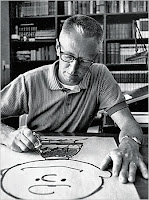The primary objective of this class will be to familiarize students with the practice of drawing. We will explore drawing media and study the processes and techniques used by drawing masters throughout history. Even though the class will focus on fundamentals, experimental and imaginative expression will be explored in the second half of the semester...
I have become much more familiar with the practice of drawing, so to speak. I have always spent a portion of my time doing something in the arts and creating something, whether it be visual or audible - drawing, painting, piano, guitar, ukulele, design, photography. However, this class has really allowed me to focus intensely on one area and improve therein. As much as I enjoy sketching, sometimes it gets pushed aside amongst work from other courses. The weekly sketches and assignments forced me to regularly practice drawing and were often a way to relax.
Before this semester I would often visualize subject matter in my head, but somewhere in the process of putting the pencil to paper, the image would become distorted in an unflattering way...leaving me generally unsatisfied. Most of the time, the same applied to drawing from observation. Now, after breaking down the visual process and learning to distinguish between what is observed and what we sometimes fabricate in the process of observation, my ability to draw from observation (and from visualized subject matter) has truly improved. I approach things with a much more discerning eye.
Aside from this, in the latter weeks of the class, the focus on narrative was quite interesting; not only were we to depict some form of observed space, but in combination with selected photographic elements, we attempted to communicate some type of sentiment to the viewer. Following this, I was reading a book at Lilly titled, Writing on Drawing: Essays on Drawing Practice and Research, edited by Steve Garner, and found two opposing, yet interesting thoughts:
Charles Blanc, one-time editor of the École des Beaux Arts in Paris,...provides a traditional and conservative definition of drawing: ...drawing is not a simple imitation, a copy corresponding mathematically to the original, an art reproduction, a pleonasm. Drawing is a work of the mind, as is indicated by the orthography of our fathers, who wrote it dessein-design. Every drawing is the expression of a thought or a sentiment, and is charged to show us something superior to the apparent truth...
And in opposition, architect Eugéne-Emmanuel Viollet-le-Duc stated:
Drawing, properly taught, is the best way of developing intelligence and forming judgement, for one learns to see, and seeing is knowledge.

For now I am possibly going to explore more literature of that sort, continuing to apply what I have learned in class, and take more courses in the Visual Arts department. Charcoal was quite a challenge, so maybe I'll continue working with that to make sure I don't sacrifice detail for expression, as I sometimes seem to do when using charcoal. However, above all, for me the course synopsis accomplished exactly what it says. In the future though, I would really like to explore animation, like the late great Charles Schulz. I am going to try to keep sketching and bringing my book with me while traveling this summer and next year so that I can have some sort of visual journal, as in the pictures below, to document what I see and think.



No comments:
Post a Comment